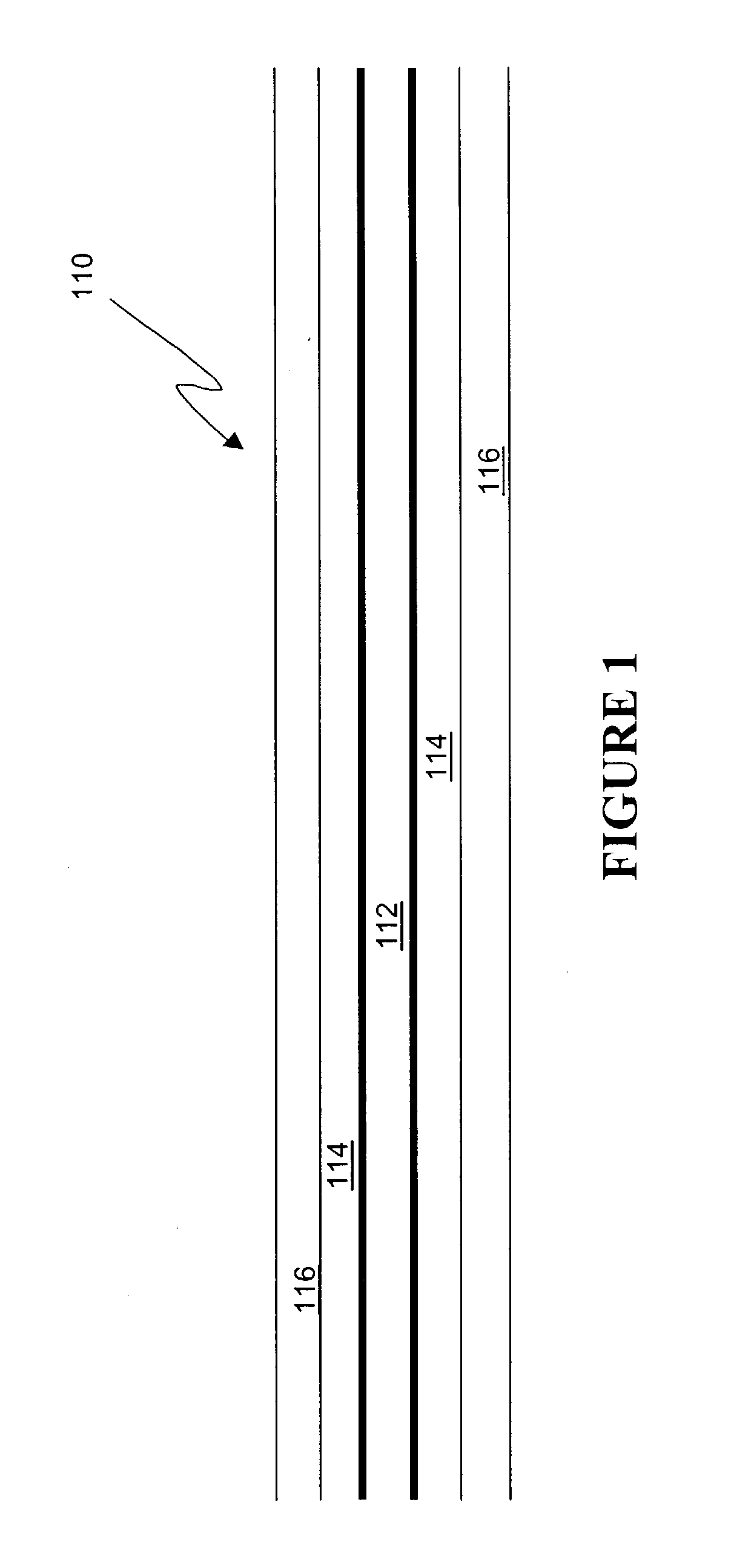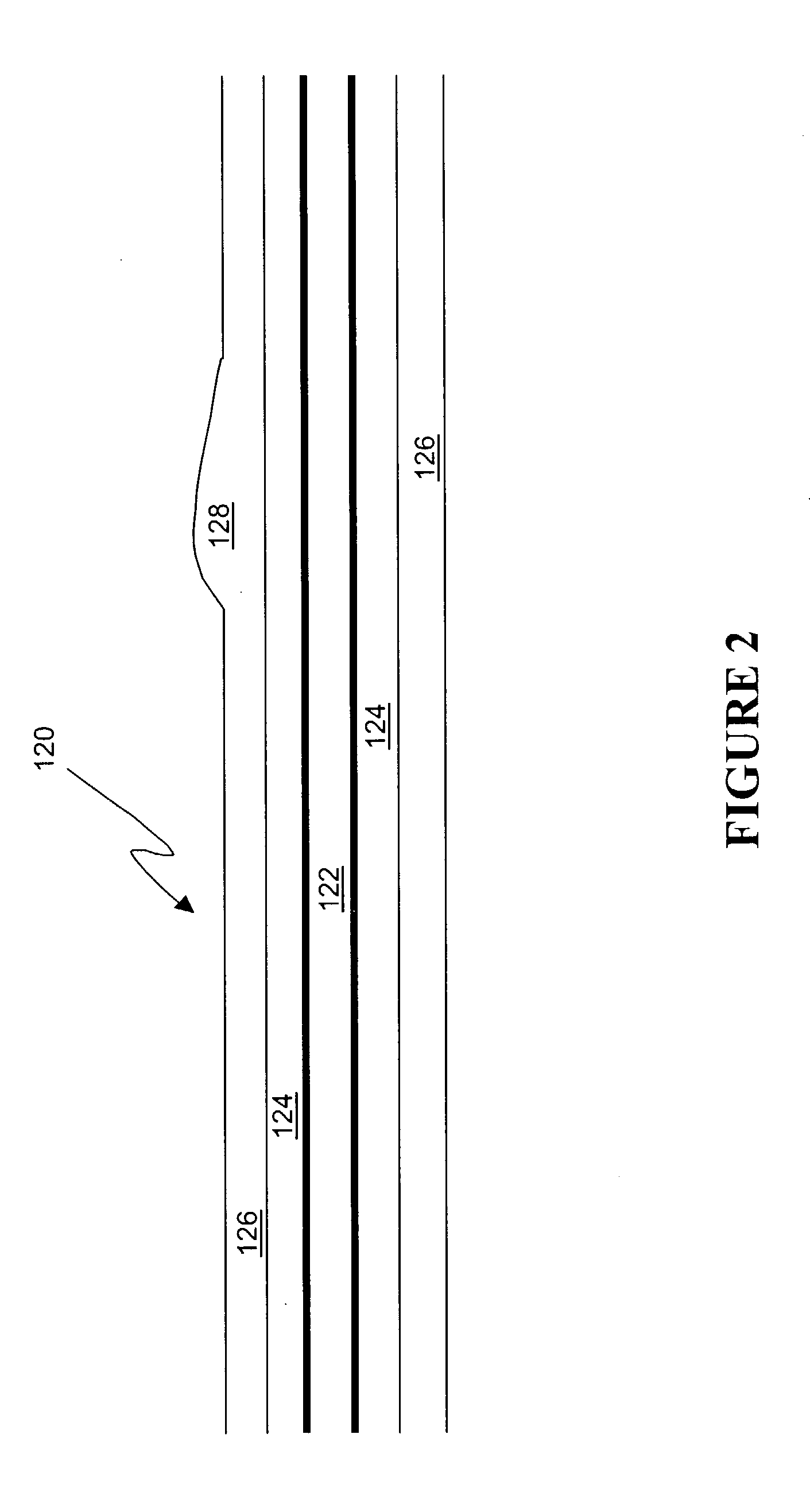Methods for making and using point lump-free composions and products coated with point lump-free compositions
- Summary
- Abstract
- Description
- Claims
- Application Information
AI Technical Summary
Benefits of technology
Problems solved by technology
Method used
Image
Examples
Embodiment Construction
[0053] A. Point Lumps
[0054] FIG. 1 shows an optical fiber 110 without any point lumps. In the center of optical fiber 110 is a glass fiber 112, surrounded by a primary coating 114 and a secondary coating 116.
[0055] With reference to FIG. 2, a point lump 128 is shown as a perturbation in or on secondary coating 126. Essentially, point lump 128 is a defect in coatings as applied to the surface of a glass fiber 122, resulting in dislocations in a surface of secondary coating 126. The dislocations resulting from the presence of point lump 128 result in a displacement of the surface of secondary coating 126 approximately 5 microns, as compared to the locations where there is no point lump 128.
[0056] As shown in FIG. 2, external perturbations resulting from external point lump 128 are caused by dislocation of secondary coating 126 extending away from primary coating 124 and glass fiber 122. FIG. 3 indicates an internal point lump 138, resulting from a dislocation of a secondary coating 13...
PUM
| Property | Measurement | Unit |
|---|---|---|
| Temperature | aaaaa | aaaaa |
| Length | aaaaa | aaaaa |
| Fraction | aaaaa | aaaaa |
Abstract
Description
Claims
Application Information
 Login to View More
Login to View More - R&D
- Intellectual Property
- Life Sciences
- Materials
- Tech Scout
- Unparalleled Data Quality
- Higher Quality Content
- 60% Fewer Hallucinations
Browse by: Latest US Patents, China's latest patents, Technical Efficacy Thesaurus, Application Domain, Technology Topic, Popular Technical Reports.
© 2025 PatSnap. All rights reserved.Legal|Privacy policy|Modern Slavery Act Transparency Statement|Sitemap|About US| Contact US: help@patsnap.com



